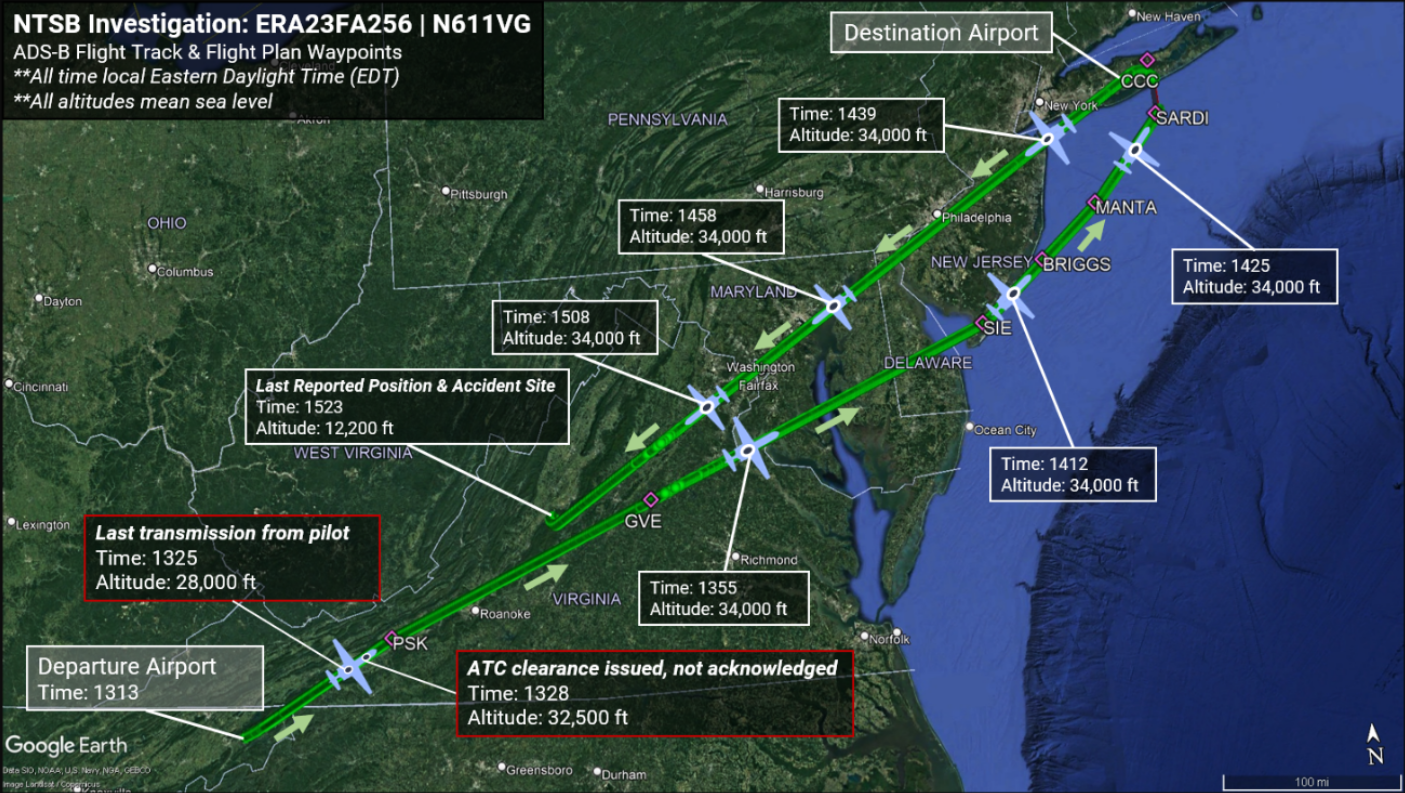Federal officials said a private jet, intercepted by fighters earlier this month over the D.C. region, flew with an unresponsive crew for hours near four major cities and some of the world’s most restricted airspace.
In its preliminary findings released Wednesday, the National Transportation Safety Board said flight controllers lost contact with the Cessna Citation 560 soon after it departed Elizabethton, Tennessee, early in the afternoon on Sunday, June 4. According to air traffic records, a routine radio exchange over flight level clearance was the last controllers in Atlanta heard from pilot Jeff Hefner 15 minutes after takeoff.
The Cessna then flew solely under computer guidance for the next hour before reaching its intended destination of Long Island, New York. With nobody at the controls to carry out a landing, the aircraft circled to the southwest and held its altitude of 34,000 feet for more than 300 miles — approaching New York City, Philadelphia and Baltimore before passing directly over the nation’s capital.
“They knew the route and approved it — all routine. What’s not routine here is the plane approached Long Island while on the autopilot,” WTOP anchor and commercial pilot Dan Ronan said, and with everyone onboard incapacitated by that point, “it made a 180-degree turn and continued flying.”

Two F-16 aircrafts, scrambled from Joint Base Andrews to intercept the uncommunicative aircraft, were the sources of a sonic boom that startled residents in Northern Virginia, Washington and Maryland. Efforts to contact the pilot through radio transmissions, flight maneuvers and flare deployments all failed, the NTSB reported, before the plane likely exhausted its fuel supply and plunged into the Blue Ridge Mountains south of Staunton in Virginia.
Four people were aboard: Hefner, a caretaker from Jamaica and a real estate broker returning from a family visit along with her 2-year-old daughter. None survived. Hefner was an accomplished pilot with a 25-year history in aviation totaling nearly 35,000 flight hours as of May, of which 850 were logged in the Cessna 500 series.
Investigators are considering whether the plane’s occupants died as a result of a catastrophic event with its oxygen or pressurization system — an F-16 reported seeing the Cessna’s pilot slumped over in the cockpit, unconscious. Complicating the search for answers was the near-total extent of the aircraft’s destruction, with transportation officials describing the wreckage as “extremely fragmented” and “scattered” around a charred crater in the woods.
“The signatures observed during an examination of the terrain, trees, and wreckage found at the accident site all were consistent with a high velocity, near vertical descent,” the NTSB wrote. “Fragments of both wings, fuselage, empennage, in addition to both engines, were located in the debris field. Flight control continuity could not be established due to the fragmentation of the wreckage. The cockpit was destroyed in the impact.”
Officials have not found the Cessna’s cockpit voice recorder among the debris field in the two weeks since the crash. The NTSB said the private aircraft was not equipped with a flight data recorder, and was not required to have one. In addition to combing through debris, investigators are also turning to maintenance inspection records and air traffic control audio recordings to piece together what happened.








